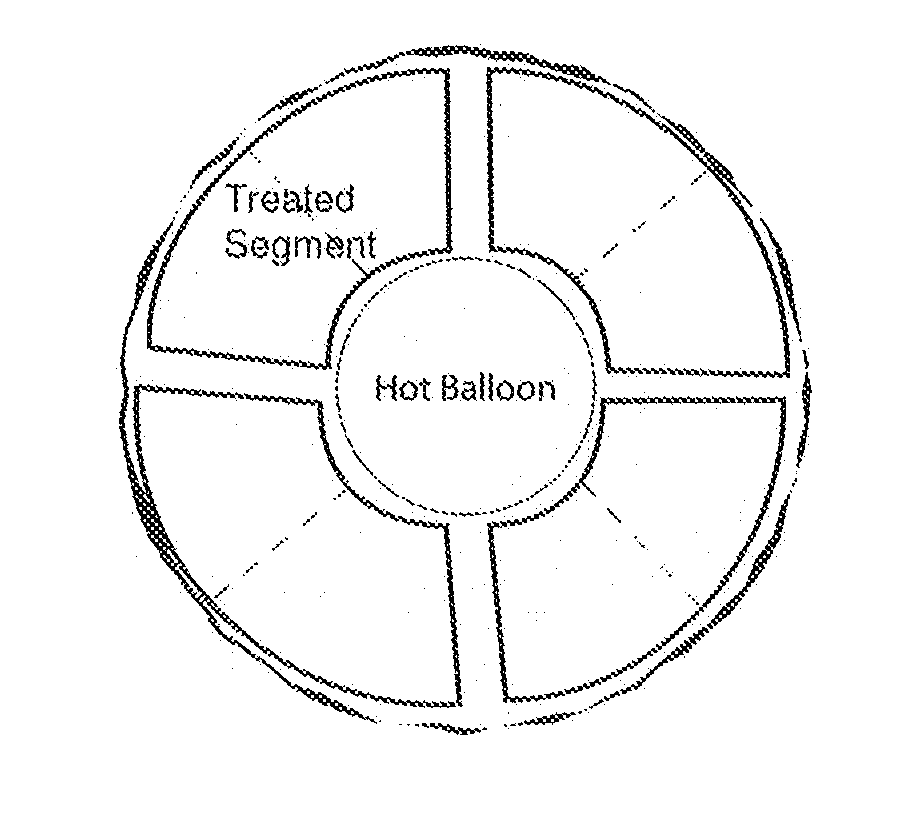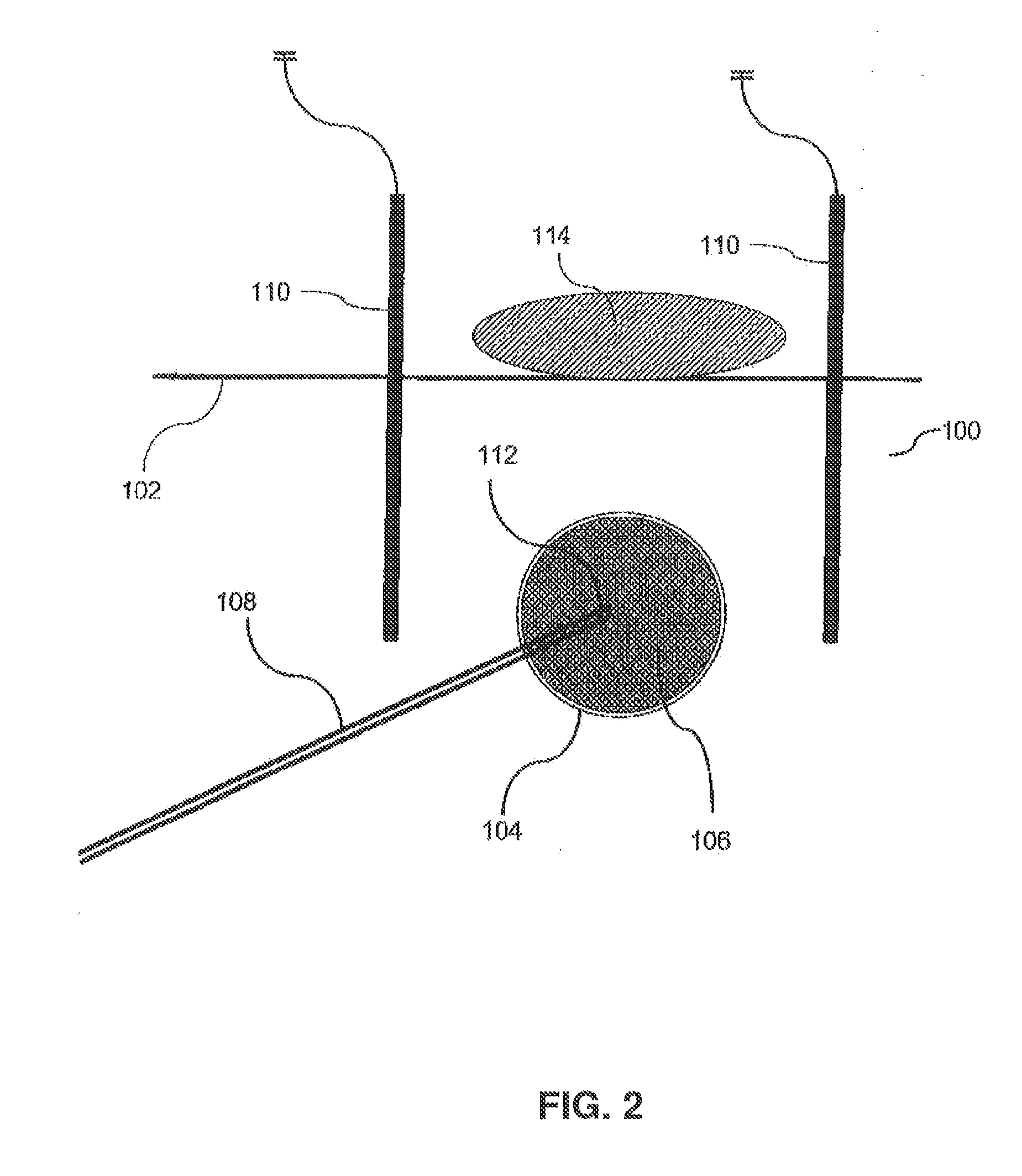Image-guided removal and thermal therapy of breast cancer
a breast cancer and image-guided technology, applied in the field of post-surgical treatment of breast cancer, can solve the problems of inconvenient patient treatment, high cost of breast irradiation therapy, and still burdensome patients
- Summary
- Abstract
- Description
- Claims
- Application Information
AI Technical Summary
Benefits of technology
Problems solved by technology
Method used
Image
Examples
example 1
Thermal Ablation of the Goat Mammary Gland as a Model for Post-Lumpectomy Treatment of Breast Cancer
[0057]Background:
[0058]Partial breast irradiation (PBI) post-lumpectomy for carcinoma deploying the Mammosite balloon catheter is practiced as alternative to the whole breast irradiation in selected patients. A one centimeter shell of targeted breast tissue surrounding the lumpectomy cavity may be effectively treated with a balloon inflated with hot fluid instead of irradiation.
[0059]Methods:
[0060]45-50 kilogram Nubian-Cross goats in post-partum phase were selected. Under endo-tracheal anesthesia, the mammary glands measuring 4-7 cm in diameter were visualized by ultrasound and 2-3 cc of the gland were excised for histological documentation and creation of a space for the balloon. A ThermaChoice® deflated balloon (Ethicon) was inserted into the space and the incision was closed ensuring one cm thick tissue coverage. The balloon was inflated with 15-20 cc of 5% dextrose and pre-heated ...
example 2
Necrosis in a Cow Udder by Thermal Therapy
[0075]Fresh, resected bovine udders were obtained from a local slaughterhouse and tested ex vivo using the thermal therapy system. A deflated balloon was passed into the tissue through a small stab incision and was inflated with 30-50 cc of 5% dextrose in water. Thermal sensor needles were inserted into the tissue 1 cm from the balloon surface. The fluid in the balloon was heated to 95° C. The actual treatment commences after the temperature reaches 95° C. and finished promptly at 2 minute intervals. After the temperature of the sensors reached 60° C., the heating element was turned off and the fluid removed. The deflated balloon was then removed from the tissue. A deep incision was made in the tissue to the point of contact between the balloon and the tissue and the cavity was examined visually and under the microscope.
[0076]Analysis of the data included measuring the diameter of the cavity and measuring the thickness of tissue necrosis ver...
example 3
Experimental Model on a Stereotactic Table
[0077]A sheep udder placed in a sealed plastic bag was firmly held within the compression plates of the stereotactic table. Initial scout view was taken and a spot in the center of the udder was selected.
[0078]A powder was then created by boiling an egg, removing the shell, and crushing the shell into a powder. The powdered egg shell was then inserted into the sheep udder through an incision and the incision was thereafter closed. The powdered egg shell 250 can be seen in FIG. 9, which depicts images of the sheep udder taken at angles of 15 degrees from right and left sides of the stereotactic table. The images discussed with respect to this example were all taken in a similar manner. The powdered egg shell simulates microcalcifications seen in mammography of human breast as early sign of developing breast cancer. Again, a scout view of the “target” followed by stereo images were taken to determine its dimensions and coordinates within the u...
PUM
 Login to View More
Login to View More Abstract
Description
Claims
Application Information
 Login to View More
Login to View More - R&D
- Intellectual Property
- Life Sciences
- Materials
- Tech Scout
- Unparalleled Data Quality
- Higher Quality Content
- 60% Fewer Hallucinations
Browse by: Latest US Patents, China's latest patents, Technical Efficacy Thesaurus, Application Domain, Technology Topic, Popular Technical Reports.
© 2025 PatSnap. All rights reserved.Legal|Privacy policy|Modern Slavery Act Transparency Statement|Sitemap|About US| Contact US: help@patsnap.com



